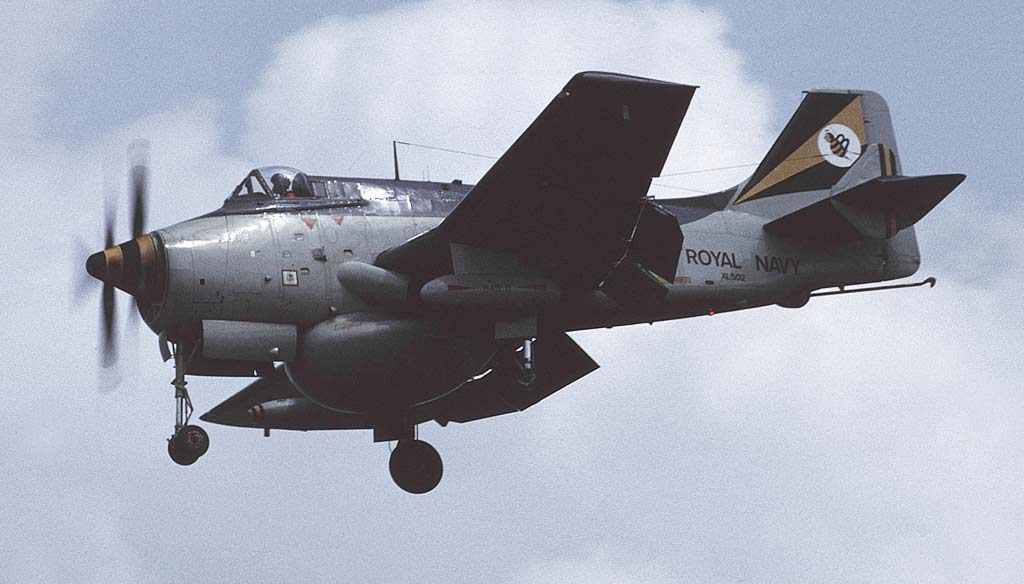The Fairey Gannet, a British carrier-borne anti-submarine warfare aircraft, featured a unique double Mamba engine and contra-rotating propellers.
In brief
The Fairey Gannet was a British aircraft designed in the late 1940s as a carrier-based anti-submarine warfare (ASW) platform. Featuring a distinctive design with contra-rotating propellers and a double turboprop engine, it served primarily with the Royal Navy. The Gannet was known for its multifunctional role, including electronic countermeasures and airborne early warning duties. Its operational period spanned the early Cold War era, playing a crucial role in naval operations and maritime patrol. The Gannet’s unique engineering and versatility made it a significant contributor to post-WWII naval aviation.
The Fairey Gannet holds a unique place in the history of naval aviation. This article will explore the aircraft’s development, design, performance, variants, and operational history.
History of the Development of the Fairey Gannet
Post-World War II, the threat of Soviet submarines in the Atlantic and beyond necessitated effective ASW measures. The Royal Navy sought an advanced aircraft to operate from aircraft carriers, capable of long-range patrolling and equipped with the latest in anti-submarine warfare technology.
Fairey Aviation initiated the Gannet project in response to this requirement. The aim was to develop an aircraft that could excel in the ASW role, with long endurance, high loiter capability, and equipped with state-of-the-art detection and weapons systems.
The Fairey Gannet first flew on September 19, 1949. Its development process was marked by innovative solutions to the challenges of ASW, resulting in a unique aircraft in both appearance and capabilities.
The Gannet was a product of its time, reflecting the rapid technological and strategic developments of the early Cold War era. It symbolized the transition to modern naval aviation tactics and equipment.

Design of the Fairey Gannet
The Gannet’s most notable design feature was its Armstrong Siddeley Double Mamba engine, two engines driving contra-rotating propellers through a common gearbox. The aircraft measured 13.41 meters in length with a wingspan of 16.56 meters.
This design provided excellent low-speed handling and safety in engine failure situations, crucial for carrier operations. However, the complexity of the powerplant and the aircraft’s considerable weight were notable drawbacks.
The Gannet’s design revolutionized ASW aircraft, with its sophisticated sonar and radar systems, along with its ability to carry an array of weapons, including torpedoes and depth charges.
Performance of the Fairey Gannet
Equipped with the unique double turboprop engine, the Gannet had a top speed of 500 km/h (310 mph) and a range of 1,300 km (810 miles). Its operational ceiling was approximately 7,620 meters (25,000 feet).
When compared to other ASW aircraft like the American Grumman S-2 Tracker, the Gannet was slower but offered superior loiter time and operational flexibility due to its engine design and fuel efficiency.
Variants of the Fairey Gannet
The Gannet saw several variants, including the ASW-focused AS.1 and AS.4, the AEW.3 for airborne early warning, and the ECM.6 electronic countermeasures version. Each variant had modifications tailored to specific roles, reflecting the aircraft’s versatility.
Military Use and Combat of the Fairey Gannet
The Gannet was extensively used by the Royal Navy for ASW patrols during the Cold War, playing a critical role in maintaining maritime security. It was also operated by other navies, including Australia and Germany.
The aircraft’s operational history saw it engaging in numerous Cold War-era NATO exercises and operations. It was eventually replaced by more advanced aircraft like the Hawker Siddeley Nimrod in the Royal Navy. The Gannet’s export success was limited but notable, especially in terms of its operational impact in the navies it served.
The Fairey Gannet stands out in aviation history as an aircraft that perfectly encapsulated the needs and challenges of its era. Its unique design, multifunctional capability, and operational success make it a fascinating study in naval aviation. While it may have been overshadowed by faster, more glamorous aircraft, the Gannet’s contribution to anti-submarine warfare and naval air operations during a critical period of the Cold War.
Back to the Special Aircraft section